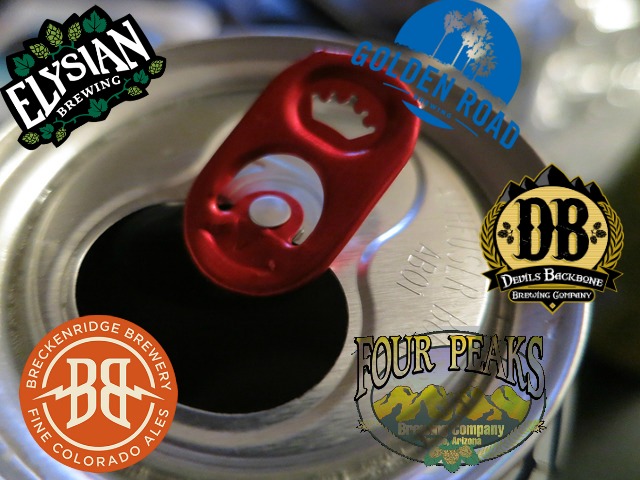Craft beer vs. Big beer has been all over the news recently, on both a national and local level. Whether it’s the AB InBev/SABMiller merger set to go through October 10th, MillerCoors buying up two craft breweries this month or Ballast Points founders fleeing a couple of weeks ago (Jack White’s exit became public the evening that we posted our blog so he wasn’t included in our original headcount), big beer is big news. The ins and outs of these buy-outs are confusing to say the least and one might wonder why the average craft beer consumer should even care who owns the brands of beer that they love.
This confusion and lack of transparency is the very reason why we think it’s important that people understand who ultimately benefits from their beer dollars. That’s because other than the Ballast Point billion dollar buyout, the news isn’t considered news beyond the craft beer community and most people don’t know who buys who and which of their favorite breweries are now under the control of big beer. The breweries who have been bought out aren’t sharing the info on their webpages themselves (you can check for yourself on any of the links below), so it is up to the consumer to be educated.
One point to mention is that all big beer is not the same. AB InBev has actively sought out ways to suppress the craft beer community in order to raise their own stable of craft breweries which they have procured over the years. MillerCoors is stepping out in a big way and although, they don’t have the shady track record that AB InBev does, a close eye is being kept to see just how their actions follow their words. So far, other owners like Constellation Brands and Heineken have stayed out of the negative limelight, though the complete overhaul of Ballast Point’s executive team did get some tongues wagging.
With MillerCoors buying up their second craft brewery in the span of a month, it raises the question, which craft beers are no longer considered “craft” (less than 25% ownership by non-craft brewers) according to the Brewers Association?” Let’s be clear, we are not saying that people should stop drinking beers made by this list of breweries. Lagunitas just put out a stellar pale ale called 12th of Never, so the issue isn’t with the quality side at all. Most of these beers still hold true to their roots and are just as good as they always have been. We are just putting the information out there so people can make informed decisions about who they want to support. Here’s a recent list of craft beers that are no longer technically “craft” and the year they sold to Big Beer.
1. Elysian Brewing Co. – AB InBev – 2015
2. Golden Road Brewing Co. – AB InBev – 2015
3. Saint Archer Brewing – MillerCoors – 2015
4. Ballast Point – Constellation Brands – 2015
5. Lagunitas – Heineken – 2015 (50% stake)
6. Breckenridge Brewery – AB InBev – 2015
7. Four Peaks Brewing Co. – AB InBev – 2015
8. Devil’s Backbone Brewing – AB InBev – 2016
9. Hop Valley Brewing – MillerCoors – 2016
10. Terrapin Beer Co. – MillerCoors – 2016
One thing is for certain, the hard working people who are employed by these breweries understandably bristle at the idea that they aren’t a craft brewery anymore. This raises the question; is the term, “craft beer,” relevant anymore at all? Depending on who you talk to, the term can mean anything from Blue Moon and Shock Top all the way to the much revered Heady Topper from The Alchemist. Maybe it has to be one way or the other. Either we keep drawing the line at what makes a brewery a craft brewery or we give up on the word “craft” and find another way to differentiate between the big dogs and the little. What do you think? What makes craft beer craft…How it tastes or who owns it?
Anna Brigham
8/10/16

